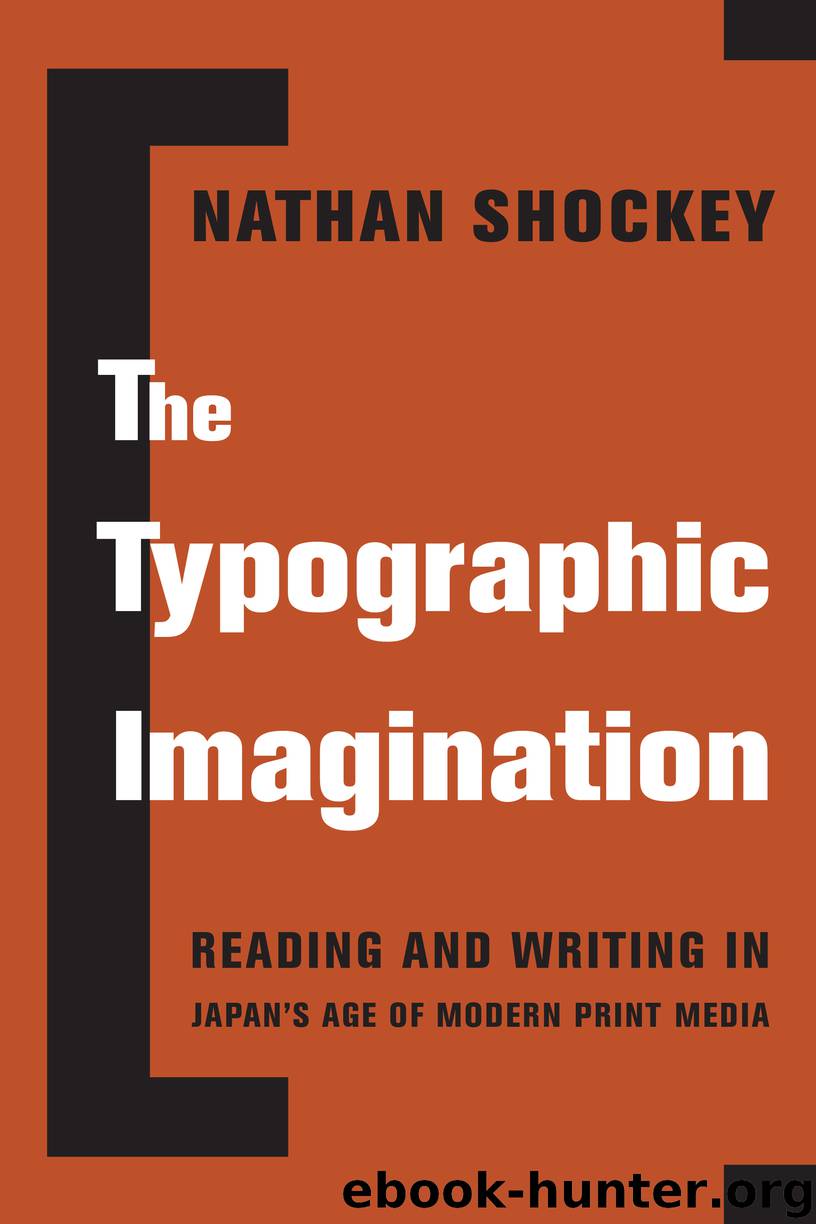The Typographic Imagination by Nathan Shockey

Author:Nathan Shockey
Language: eng
Format: epub
Publisher: Columbia University Press
SCRIPT CONTESTED AND REFORMED
Debates over kana orthography reached a pitch following the convening of a second Temporary Committee on National Language (Rinji Kokugo Chōsakai) in 1921, which revived the phonetic option. In this later phase, the publishing industry was far from neutral, thanks to the guidance of Prime Minister Hara Takashi (1856–1921), previously president of the Ōsaka Mainichi Shinbun newspaper. For decades, Hara had campaigned for the reduction of kanji, a position shared by earlier publishers, including Fukuzawa Yukichi and Maejima Hisoka (1835–1919), first postmaster general of Japan and founder of the Hōchi Shinbun (Postal News, 1872–1949) newspaper. For Maejima and Hara alike, orthographic and kanji reform could facilitate the proliferation of mass-market print and thus a literate public; conversely, the cooperation of newspapers and magazines was indispensable to achieve this goal. Hara’s proreform sentiment was shared by newspaper editors, as limiting characters saved time and money at the printing press. In 1921, sixteen newspapers petitioned the government for a kanji reduction, and the following year a larger conglomerate of periodical publishers and printers announced a new list of twenty-one hundred jōyō kanji for standard usage.12 Hara’s committee of proreform publishers carried on his mission after he was felled by an assassin’s bullet, but the committee also included many literati who did not share Hara’s view. The group was chaired by Mori Ōgai (1862–1922) and included the authors Shimazaki Tōson (1872–1943), Arishima Takeo (1878–1923), and Abe Jirō (1883–1959), as well as the critics Chiba Kameo (1878–1935) and Hasegawa Tenkei (1876–1940). Ōgai was a supporter of historical orthography and aimed to assure that it remained “proper” (seisoku) and “correct” (tadashii), but his position was more than simply reactionary.13 In a short piece written for the previous committee, he posits that writing is based on speech, but both have changed across history; rekishiteki kanazukai is not so much writing that is old as writing subject to historical forces. Orthography for Ōgai is imbued with material character, a thing that possesses “firm existence” (hakkiri sonzai shiteiru mono) and a “sense of reality” (hontō no sonzaikan). In contrast to spoken language (kōgo), which transforms “naturally” (shizen ni), written language (bungo) is for him a “thing imbued with artifice” (jinkō ga kuwawatta mono), and it is only “once language becomes writing that it is truly complete.”14 But Ōgai died in 1922, and his replacement by Ueda assured the committee’s favor for a phonetic system, which it announced on December 24, 1924.15 The key elements of the plan were the use of small ya や, yu ゆ, yo よ for vowel combinations, such as shou しょう in place of seu せう, or kyou きょう in place of kefu けふ; the exclusive use of small tsu っ for agglutinated double consonants; the a-line kana a あ, i い, u う for elongating a, i, and u sounds; the kana u う rather than fu ふ to elongate o sounds; the standardization of all grammatical particles to ostensibly phonetic sounds with the exception of ha は, he へ,
Download
This site does not store any files on its server. We only index and link to content provided by other sites. Please contact the content providers to delete copyright contents if any and email us, we'll remove relevant links or contents immediately.
| African | Asian |
| Australian & Oceanian | Canadian |
| Caribbean & Latin American | European |
| Jewish | Middle Eastern |
| Russian | United States |
4 3 2 1: A Novel by Paul Auster(12284)
The handmaid's tale by Margaret Atwood(7679)
Giovanni's Room by James Baldwin(7192)
Asking the Right Questions: A Guide to Critical Thinking by M. Neil Browne & Stuart M. Keeley(5636)
Big Magic: Creative Living Beyond Fear by Elizabeth Gilbert(5614)
Ego Is the Enemy by Ryan Holiday(5294)
The Body: A Guide for Occupants by Bill Bryson(4974)
On Writing A Memoir of the Craft by Stephen King(4863)
Ken Follett - World without end by Ken Follett(4645)
Adulting by Kelly Williams Brown(4487)
Bluets by Maggie Nelson(4474)
Eat That Frog! by Brian Tracy(4435)
Guilty Pleasures by Laurell K Hamilton(4360)
The Poetry of Pablo Neruda by Pablo Neruda(4039)
Alive: The Story of the Andes Survivors by Piers Paul Read(3969)
White Noise - A Novel by Don DeLillo(3954)
Fingerprints of the Gods by Graham Hancock(3942)
The Book of Joy by Dalai Lama(3901)
The Bookshop by Penelope Fitzgerald(3776)
